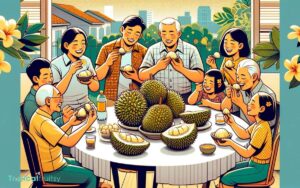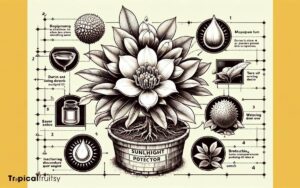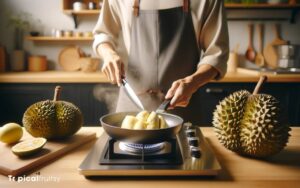Where Is Durian from in Philippines? Unlocking the Secrets!
Durian, known for its strong aroma, is primarily cultivated in the southern Philippines, with Davao City renowned as the epicenter of its production.
The fruit benefits from the rich volcanic soil and tropical climate of Mindanao, while also being grown in the Visayas and, increasingly, in Luzon.
Originating from Southeast Asia, Durian is well-suited to the Philippine climate, particularly in:
The fruit’s harvesting season is an important cultural event in the Philippines, often coinciding with local festivals.
Davao City, hailed as the Durian Capital of the Philippines, is at the heart of the country’s durian culture and production.
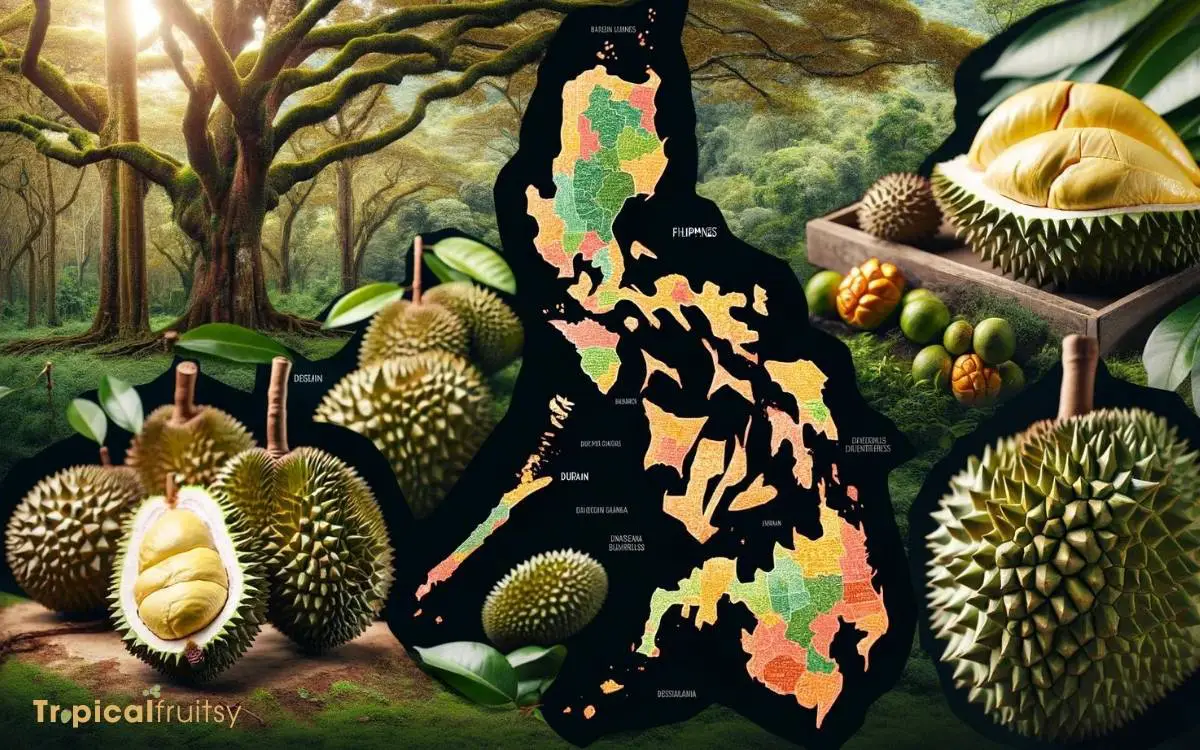
Key Takeaway
Durian Production Areas in the Philippines: A Comprehensive Guide
| Region | Significance in Durian Production | Notable Facts |
|---|---|---|
| Mindanao | Primary durian-producing region | Ideal soil and climate; Davao City is a key area for durian farms. |
| Visayas | Contributes unique varieties | Different types of durian grown compared to Mindanao. |
| Luzon | Emerging durian producer | Increasing involvement in durian cultivation. |
The Origins of Philippine Durian
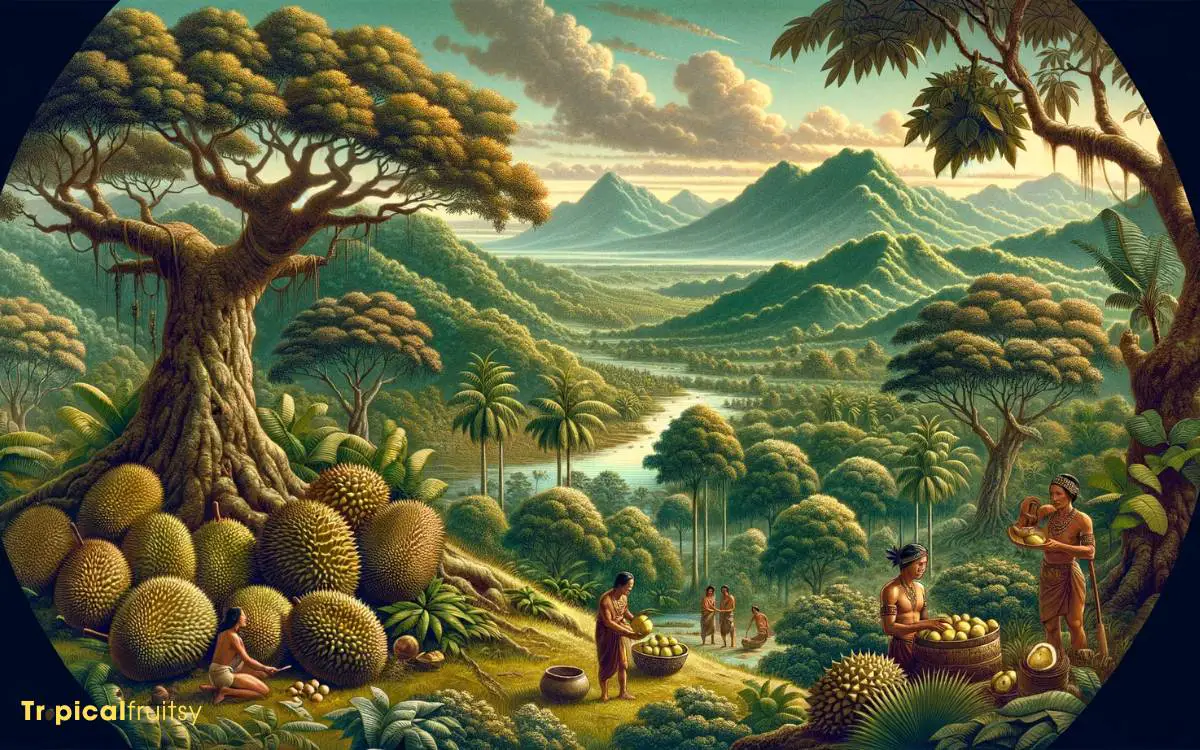
Although durian is widely cultivated and enjoyed throughout Southeast Asia, its cultivation in the Philippines can be traced back to the Mindanao region, where it thrives in the fertile volcanic soil.
This locale’s climatic and edaphic conditions have proven to be optimal for durian trees, which require ample rainfall and well-drained, rich soil to flourish.
Scientific analysis reveals that the durian varieties found in the Philippines have developed unique genetic traits, likely a result of both natural selection and human cultivation practices.
This suggests a long history of durian cultivation in the region, with local farmers selecting for qualities such as taste, size, and tree yield, which may differ significantly from those of durian varieties in neighboring countries.
Davao: Durian Capital
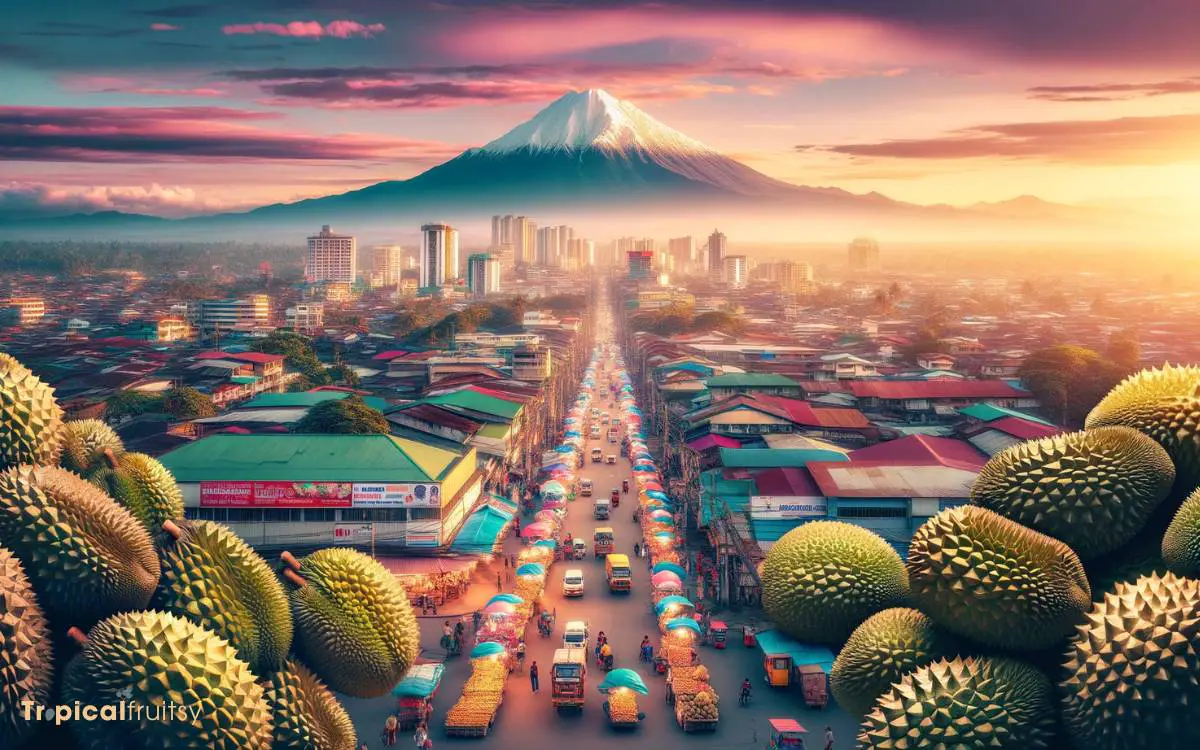
The city of Davao, often hailed as the Durian Capital of the Philippines, stands out as a prime example of the country’s dedication to this pungent fruit.
Renowned for its large-scale production and variety of durian cultivars, Davao’s agricultural landscape is intricately tied to the durian industry, with a significant portion of its agrarian economy dependent on this commodity.
- Cultivation Practices: Advanced agricultural techniques ensure high-quality yield, emphasizing Davao’s commitment to durian farming.
- Cultural Significance: Durian festivals and events in Davao celebrate the fruit, underlining its role in local heritage and tourism.
- Research and Development: Institutions in Davao conduct research to improve durian varieties and farming methods, showcasing a drive for innovation.
- Market Influence: Davao’s durian trade significantly impacts national and international markets, reflecting its authoritative status in the durian industry.
This analytical perspective underscores Davao’s multifaceted relationship with the durian fruit, asserting its position as a pivotal hub for cultivation, culture, and commerce.
Durian Farms in Mindanao
Beyond Davao, numerous durian farms are scattered across Mindanao, further cementing the island’s reputation as a significant contributor to the Philippines’ durian production.
These plantations are integral to the agricultural landscape, engaging in a complex interplay of traditional farming practices and modern horticultural techniques.
The farms vary in size and capacity, with some being substantial commercial operations and others small-scale family-run endeavors.
| Region | Number of Farms | Notable Varieties |
|---|---|---|
| Zamboanga | 15 | Puyat, Native |
| Bukidnon | 25 | Arancillo, Cob |
| Sultan Kudarat | 7 | Monthong, Chanee |
| South Cotabato | 12 | Duyaya, Durio |
| Surigao | 10 | Graveolens, Kadayawan |
These statistics reflect a robust sector that contributes not only to local economies but also to the biodiversity and genetic conservation of durian cultivars.
Understanding the spread and specialization of these farms enables a comprehensive analysis of the durian industry in Mindanao.
This focus on regional production sets the stage to explore the Visayas’ durian varieties, where agricultural dynamics shift yet again.
Visayas’ Durian Varieties
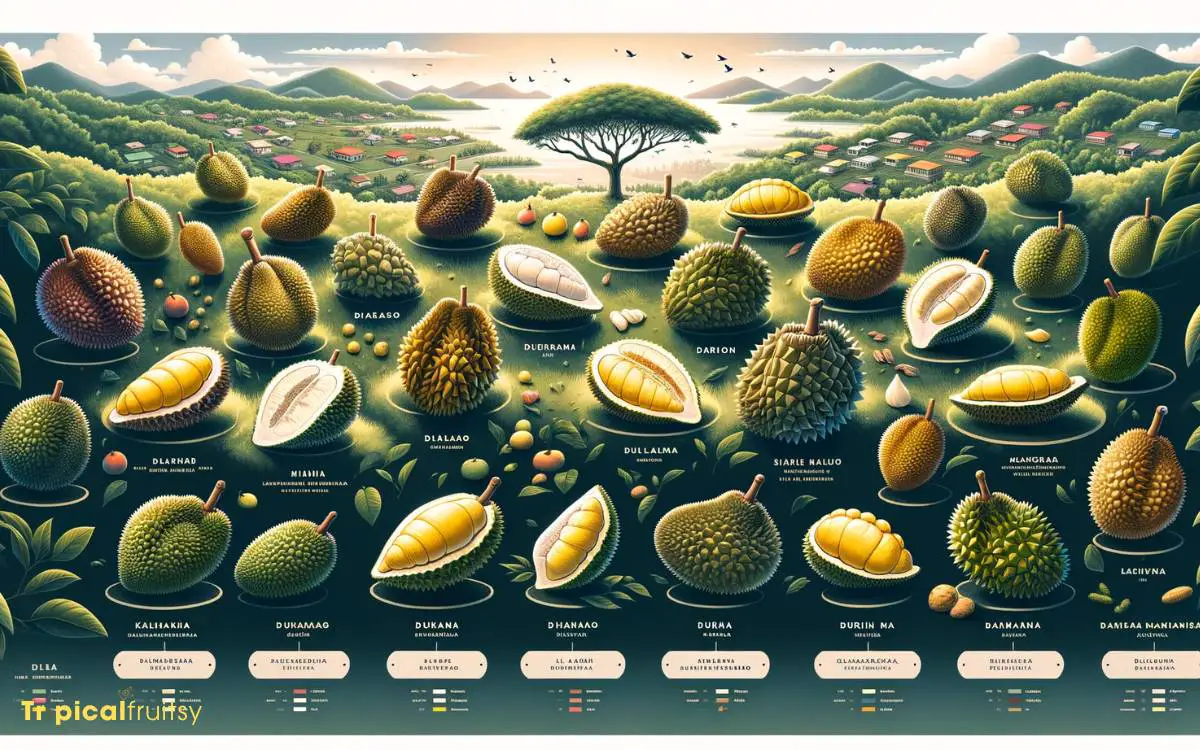
In the Visayas region, durian cultivation yields unique varieties such as Puyat and Duyaya, which are less common elsewhere in the Philippines.
The propagation and cultivation of these cultivars are of significant interest to agricultural researchers and horticulturists due to their distinct characteristics and potential for market diversification.
The Visayan durian varieties exhibit a nuanced flavor profile and a varied textural composition compared to their Mindanao counterparts.
- Puyat: Known for its oblong shape and mild sweetness coupled with a creamy texture.
- Duyaya: Characterized by its large size and pronounced aroma, offering a bittersweet taste.
Cultivation Practices: Adapted to the Visayas’ climate, with emphasis on soil nutrition and tree spacing.
Market Potential: These varieties hold niche appeal, potentially attracting aficionados and new consumers.
A scholarly examination of these cultivars reveals the Visayas’ contribution to the Philippine durian landscape, underscoring the region’s agricultural diversity and specialty crop development.
Luzon’s Durian Presence
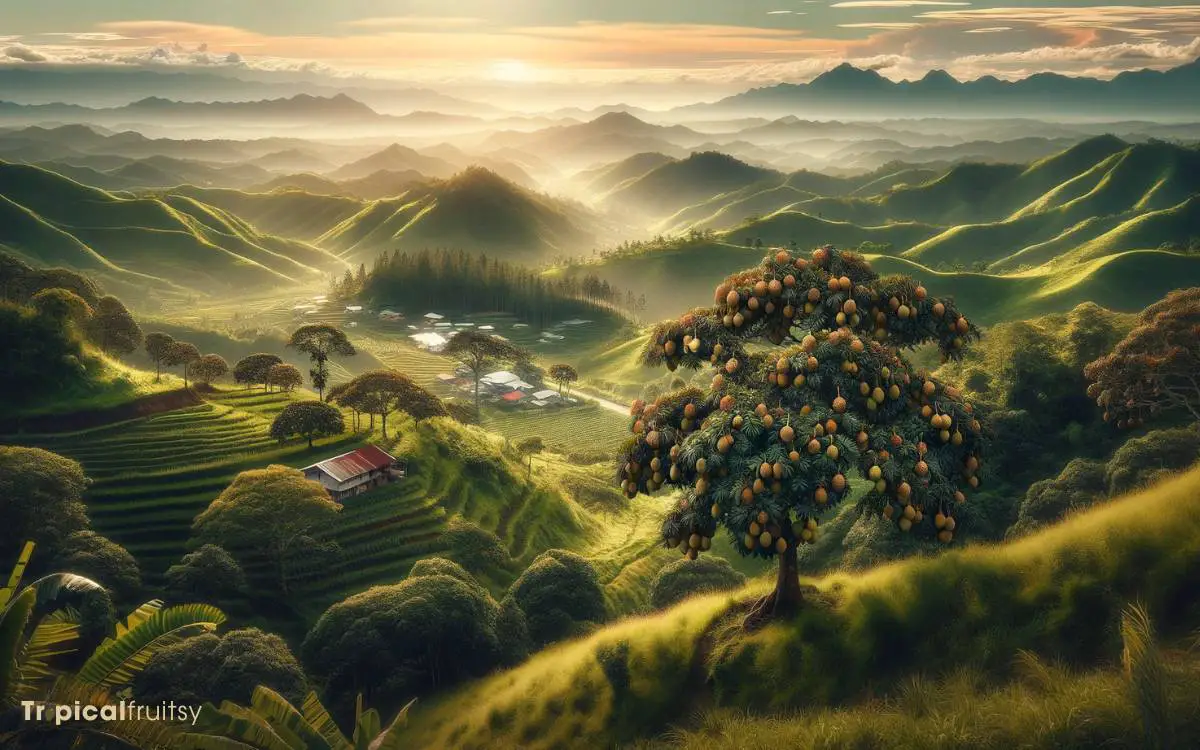
Luzon, the largest island in the Philippines, plays host to a modest but growing durian cultivation sector, with farmers increasingly exploring the fruit’s commercial viability in the region’s varied climates.
The agricultural landscape of Luzon is marked by its heterogeneous topography, which ranges from the rugged Cordillera mountains to the fertile plains of Central Luzon.
This diversity in elevation and climate provides a unique opportunity for durian cultivation, as different varieties may be more suited to specific microclimates within the island.
Here is a concise table outlining key aspects of Luzon’s durian presence:
| Factor | Description |
|---|---|
| Climate Variance | Ranges from tropical lowland to cooler highland areas |
| Cultivation | Expanding in areas with suitable microclimates |
| Varieties | Both native and introduced types are being tested |
| Research | Agricultural stations studying optimal growing conditions |
| Market Potential | Rising demand for durian in local and national markets |
This analysis underpins a strategic approach to cultivating durian in Luzon, considering the complex interplay of ecological factors and market forces.
Harvesting Seasons and Practices
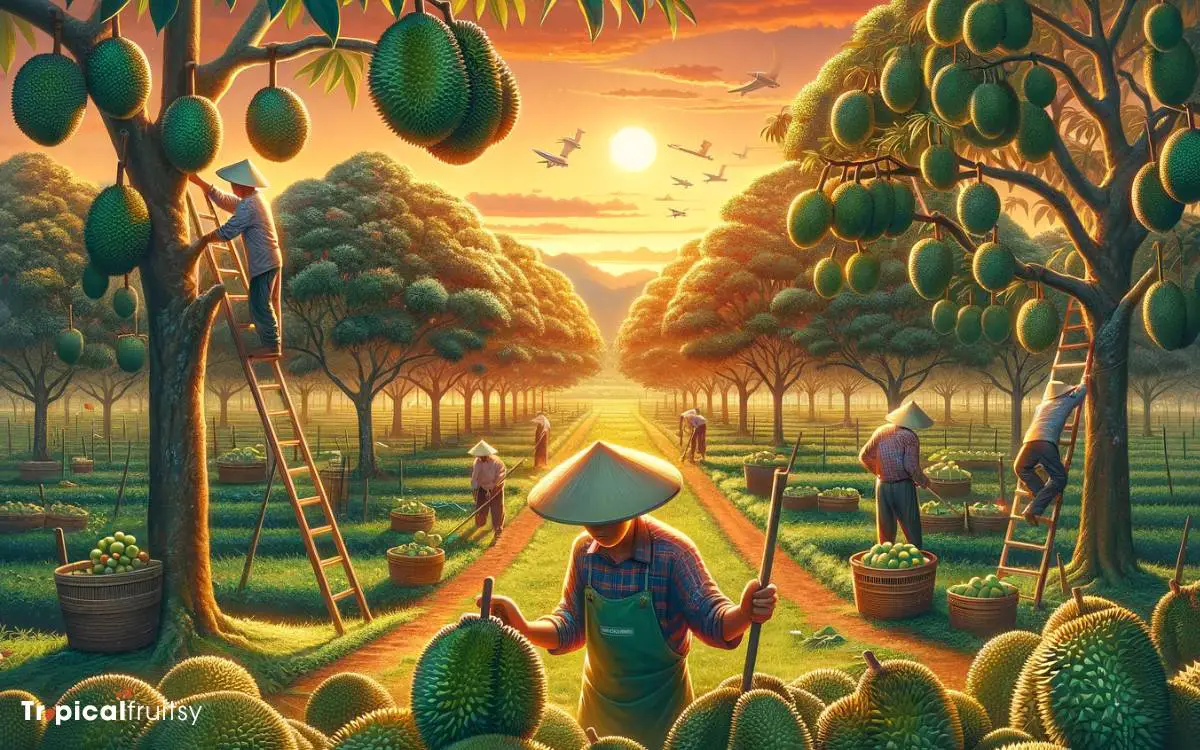
Several regions across the Philippines have distinct harvesting seasons for durian, primarily dictated by local climate patterns and agricultural practices.
These seasons can vary significantly, with some areas experiencing earlier harvest times than others.
- Climatic Influence: The onset of the rainy season often signals the start of durian harvesting, as the increased moisture helps in fruit development.
- Varietal Variation: Different durian varieties may have staggered maturation times, which affects the timing of harvest within the same region.
- Agronomic Techniques: Pruning, fertilization, and other farm management practices play a role in optimizing fruiting schedules.
- Market Demand: Harvesting may be strategically timed to coincide with peak market demand, ensuring maximum profitability for farmers.
Understanding these factors is vital, as they are deeply interwoven with the cultural significance of durian in the Philippines, which will be examined in the following section.
Cultural Significance in the Philippines
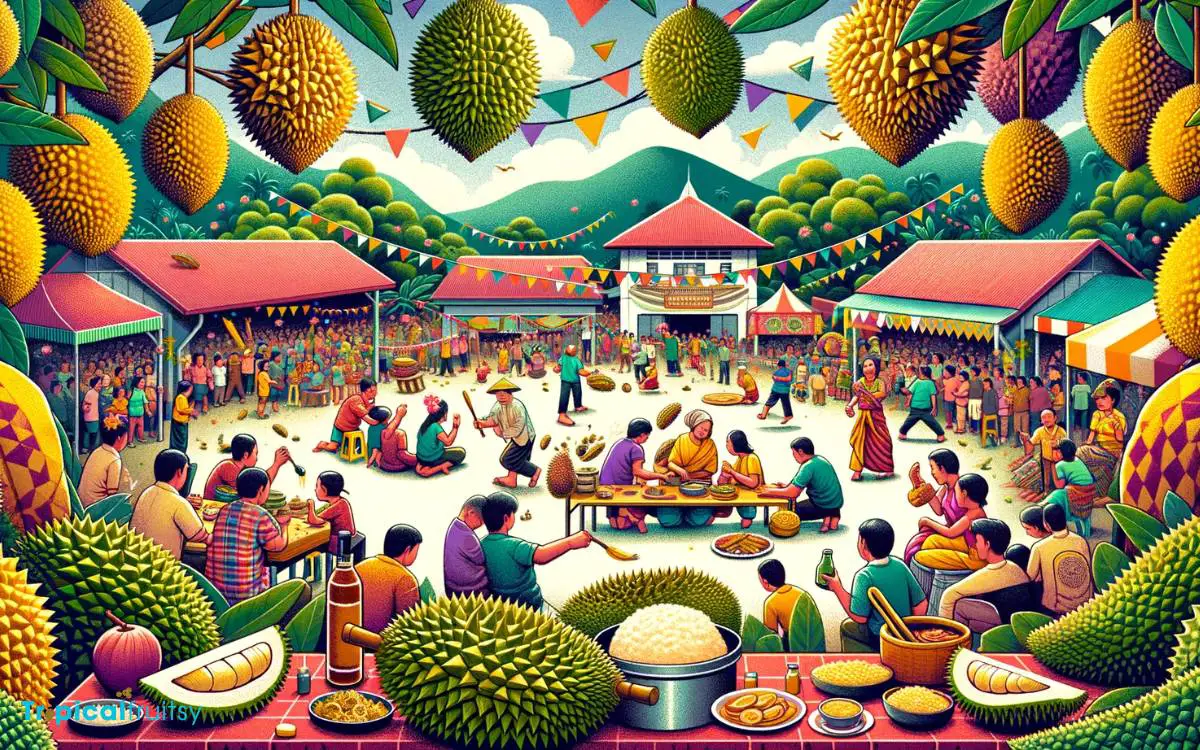
The cultural significance of durian in the Philippines extends beyond its status as a mere fruit to being an emblematic symbol of social gatherings and regional pride.
This thorny and pungent delicacy represents a multifaceted aspect of Filipino culture, particularly in Mindanao where its abundance is celebrated.
Its presence at festive events is a testament to its integral role in communal experiences, underscoring the fruit’s embeddedness in the socio-cultural fabric.
The durian’s polarizing aroma and taste have engendered a form of identity among Filipinos, particularly the Davaoeños who hail it as a regional treasure.
This cultural affinity is analyzed through the lens of economic, social, and symbolic capital – revealing the fruit as a nexus of local tradition and collective identity.
Conclusion
The durian fruit, with its formidable aroma and formidable presence, has rooted itself deeply within the fertile soils of the Philippine archipelago.
Its cultivation, primarily in Mindanao, has elevated Davao to the throne of the durian kingdom, garnering a cultural significance that transcends mere consumption.
The cyclical nature of its harvest seasons perpetuates a tradition that mirrors the nation’s own resilience and richness, with each region contributing to the tapestry of durian diversity.


